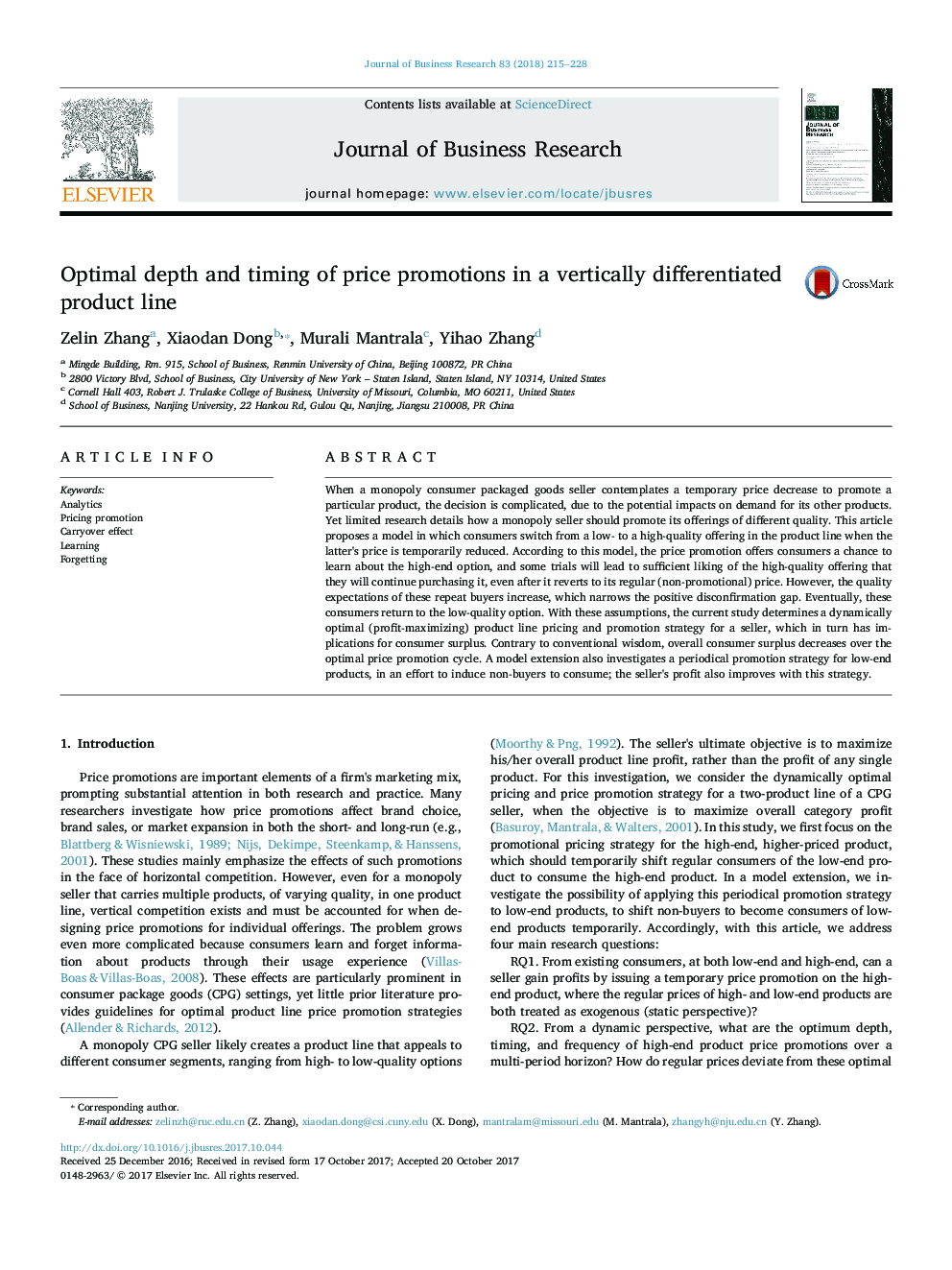| Article ID | Journal | Published Year | Pages | File Type |
|---|---|---|---|---|
| 7425436 | Journal of Business Research | 2018 | 14 Pages |
Abstract
When a monopoly consumer packaged goods seller contemplates a temporary price decrease to promote a particular product, the decision is complicated, due to the potential impacts on demand for its other products. Yet limited research details how a monopoly seller should promote its offerings of different quality. This article proposes a model in which consumers switch from a low- to a high-quality offering in the product line when the latter's price is temporarily reduced. According to this model, the price promotion offers consumers a chance to learn about the high-end option, and some trials will lead to sufficient liking of the high-quality offering that they will continue purchasing it, even after it reverts to its regular (non-promotional) price. However, the quality expectations of these repeat buyers increase, which narrows the positive disconfirmation gap. Eventually, these consumers return to the low-quality option. With these assumptions, the current study determines a dynamically optimal (profit-maximizing) product line pricing and promotion strategy for a seller, which in turn has implications for consumer surplus. Contrary to conventional wisdom, overall consumer surplus decreases over the optimal price promotion cycle. A model extension also investigates a periodical promotion strategy for low-end products, in an effort to induce non-buyers to consume; the seller's profit also improves with this strategy.
Related Topics
Social Sciences and Humanities
Business, Management and Accounting
Business and International Management
Authors
Zelin Zhang, Xiaodan Dong, Murali Mantrala, Yihao Zhang,
